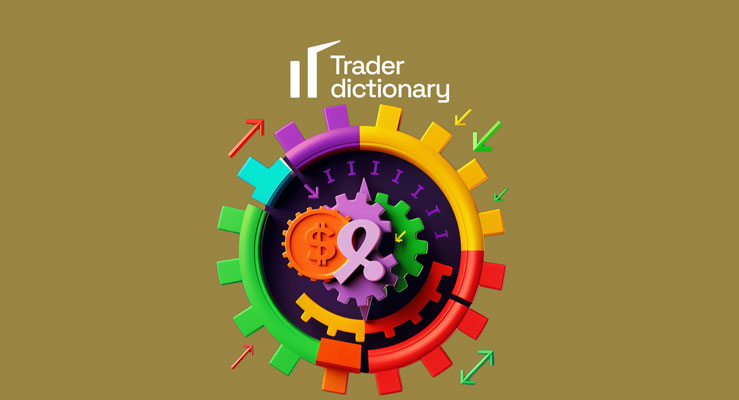Welcome to the article “What is Margin Trading? An A to Z Guide,” exploring one of the most important and interesting concepts in the world of financial trading and investment – Margin Trading. This investment method allows investors to use borrowed capital to enhance profitability but also increases risks. We will delve deep into explaining what margin trading is, how it works, and the associated benefits and risks. Whether you’re a beginner or experienced in this field, the information provided will offer a clear and in-depth understanding of Margin Trading. Let’s embark on this journey together!
Concept of Margin Trading
- Definition and explanation of margin trading, also known as trading on margin, a common term in stock and currency investment circles. Simply put, margin trading involves using borrowed money from a broker to trade a larger amount than you have. This is a way to amplify profits from small market movements. But remember, it can lead to significant losses as well.
- In margin trading, you are required to deposit a certain amount of money, known as “margin,” as collateral for the loan. The margin ratio varies depending on the broker’s regulations and the type of asset you trade. For example, with a 10% margin ratio, you only need $10,000 to trade a lot worth $100,000.
- Key concepts in margin trading include “Margin Call” and “Stop Out Level.” A Margin Call occurs when the value of your assets drops to a certain level, requiring you to add more money to the account or sell some assets to maintain the trading position. Failure to meet these requirements may lead the broker to automatically close your positions at the “Stop Out Level” to protect themselves from risk.
- Importance of having solid knowledge and good risk management skills in margin trading. It’s not suitable for everyone, especially beginners. Consider carefully before starting!
Pros and Cons of Margin Trading
- Pros: Margin trading allows investors to enhance their financial leverage, meaning with less capital, you can engage in much larger trades. This opens up opportunities for significant profits from small market movements.
- Cons: High risks in margin trading. Market movements against your predictions can lead to the loss of your initial capital and expected profits. Therefore, risk management is vital. Additionally, consider transaction fees and interest rates on borrowed money, which can reduce your profits.
- Conclusion: Margin trading is a double-edged sword. It offers potential benefits but also comes with high risks. Make a well-considered decision!
Basic Terms in Margin Trading
- “Margin”: The amount investors need to deposit to open a trading position, serving as collateral for the borrowed amount.
- “Leverage”: The ratio between the trade amount and the actual money used. For example, with 1:10 leverage, you need $1,000 to buy $10,000 worth of stocks.
- “Margin Call”: Occurs when the value of your assets falls below the required collateral level, necessitating additional funds or asset sales to maintain the position.
- “Stop Out Level”: The point at which the broker automatically closes your trading positions if asset value continues to drop, to prevent larger losses.
- “Maintenance Margin”: The minimum amount you must maintain in your account to avoid a margin call. If your account falls below this, you’ll need to add more funds or accept position closures.
- Understanding these terms is crucial for managing risks and succeeding in margin trading.
How Does Margin Trading Work?
- Explanation of the margin trading process for beginners.
- Opening a margin account with a broker and depositing a certain amount as margin.
- Example: Buying $100,000 worth of stocks with a 10% margin means you need $10,000 in your account. The broker provides the rest, allowing you to purchase more stocks than your actual capital.
- Risks: The potential for significant losses if the market moves unfavorably. Interest rates and transaction fees from brokers should also be considered.
- Advice: Weigh the risks and rewards carefully before starting.
Should Beginners Use Margin Trading?
- Margin trading can be attractive for beginners due to financial leverage. However, it also comes with high risks. Market movements against expectations can significantly increase losses.
- For beginners, understanding the market, financial analysis skills, and good risk management are crucial. Beginners are advised to avoid margin trading until they gain more experience and knowledge.
- Tip: Start with small trades and gradually increase as you gain experience and confidence. Continuous learning and knowledge enhancement are key in any investment form.
- Conclusion: Beginners should carefully consider before engaging in margin trading. Approach the market with caution and knowledge.
Example of Margin Trading
- A hypothetical situation to illustrate margin trading. Assume you’re an investor participating in stock market margin trading.
- You open a margin account with a broker and deposit $10,000. With a 10% margin ratio, you can trade up to $100,000. You decide to use this full capacity to buy shares of Company A at $100 per share, obtaining 1,000 shares.
- If the share price rises to $110 and you sell, your total sale value is $110,000. After deducting the initial $100,000, you gain a profit of $10,000 – a significant return on your initial margin.
- Conversely, if the share price drops to $90, the total value of your investment falls to $90,000. This means you lose not only your $10,000 margin but also owe the broker an additional $10,000.
- Conclusion: Margin trading offers the potential for high profits but also comes with high risks. Investors should be well-prepared with knowledge and risk management skills before starting.
Risks Associated with Margin Trading
- High risk of losses due to financial leverage.
- Risks of Margin Call and Liquidation if asset values drop below minimum collateral levels.
- Transaction fees and interest rates on borrowed money can erode profits, especially in unsuccessful trades.
- Psychological risks: Margin trading can create significant mental pressure, especially during market volatility. Emotional management and firm decision-making are crucial.
- Conclusion: Margin trading is not for everyone. Without thorough financial and psychological preparation, you may face undesirable consequences. Remember, knowledge and caution are keys to success in financial markets.
Conclusion
- Summary of the exploration and deeper understanding of Margin Trading through the article “What is Margin Trading? An A to Z Guide.” We hope the information and knowledge shared have given you a clearer understanding of the concept, its advantages, risks, and how it operates in the financial investment world.
- Reminder: While Margin Trading offers opportunities to enhance profits, it also comes with significant risks. Ensure you are equipped with adequate knowledge, analytical skills, and risk management before deciding to participate. Invest smartly and cautiously to achieve your financial goals.
- Final Note: If you have any questions or need more information, feel free to contact us. We are always ready to support and share experiences to help you make wise investment decisions. Wish you success and stay tuned to connextfx.com for more useful information!









